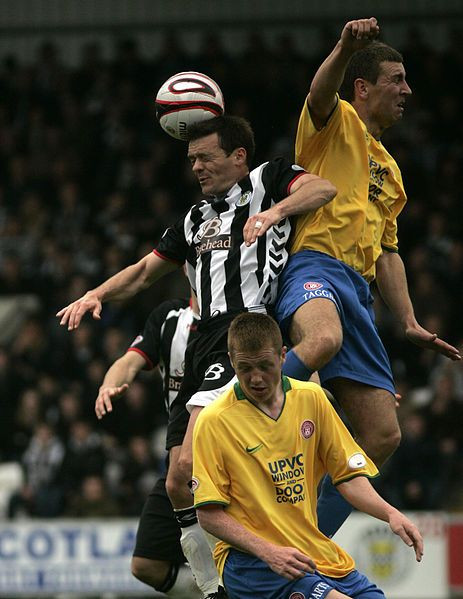Heading A Soccer Ball Could Result In Long-Term Brain Damage

Soccer is the world's most popular sport, and with any sport comes chances of getting injured. Aside from the dangers of scraped knees and kicked shins, a new study has found that heading the ball repeatedly can damage the brain over a longer term.
On average, soccer players head the ball six to 12 times during games, and 30 times or more during practice. And although the ball travels at speeds of more than 50 mph at times, scientists are worried that repeated "subconcussive" impacts of the brain — getting shaken in the skull — might result in brain damage such as laceration of nerve fibers.
"Soccer is widely played by people of all ages and there is concern that heading the ball — a key component of the sport — might damage the brain," said Dr. Michael L. Lipton, associate director of the Gruss Magnetic Resonance Research Center at the Albert Einstein College of Medicine of Yeshiva University. "Repetitive heading could set off a cascade of responses that leads to degeneration of brain cells over time."
It is believed that famed former English soccer player, Jeff Astle, died in 2002 of brain damage at 59 years old. When he played throughout the 1960s and 1970s, he was "a prolific header of the ball, no one has come near since. He scored more than half of his goals with his head," Laraine Astle, Jeff's widow, told the BBC.
Soccer balls at the time that Astle was playing were made of leather and were much heavier. Even though balls are lighter today, they still have a significant impact on a player's head.
Researchers from Yeshiva University studied 37 healthy, amateur soccer players with a median age of 31 who had been playing soccer for an average of 22 years. They reported heading the ball between 32 and 5,400 times during the preceding season, which lasted 10 months, according to CNN. Next, they underwent diffusion tensor imaging (DTI), an advanced MRI-based imaging technique that allowed the researchers to examine the uniformity of water movement — also called fractional anisotropy (FA) — throughout the brain.
Unusually low FA within white matter means that there is axon damage, and has been associated with cognitive impairments in patients with traumatic brain injury.
"The DTI findings pertaining to the most frequent headers in our study showed white-matter abnormalities similar to what we've seen in patients with concussion," Lipton said. "Soccer players who headed the ball above a threshold between 885 to 1,550 times a year had significantly lower FA in three areas of the temporal-occipital white matter."
Lipton also found that at about 1,800 headers, the players in the small sample had significant problems with memory tests.
Essentially, the study found that the brain can repair itself up to a certain point. Once it goes beyond that point, it cannot keep up and becomes overwhelmed.
In a March examination on the effects of heading, Dr. Anne B. Serano, a professor of neurobiology at the University of Texas Health Science Center in Houston, developed an iPad version of a popular cognitive test, according to The New York Times.
In the test, participants are told to focus on an image of four boxes grouped in a roughly square shape on the screen. They are then asked to touch a box when it lights up on the screen. In another part of the test, they are asked to touch the box opposing the one that lights up, in a response known as the anti-point response, which tests how well participants can control their reactions and impulses, intellectually overriding the natural response of reaching for the lit box.
They used the test on a girls' high school varsity soccer team right after they had finished practice, where some of the girls had headed the ball as many as 20 times. They also used 12 non-soccer playing high school girls, some of them athletes, to serve as the control group.
When they tested the girls, they found that the soccer players weren't as quick with their responses in the anti-point tasks, compared to the girls who weren't playing soccer. Furthermore, they found that the girls who performed the slowest had also headed the ball the most times during practice. They then re-ran their analysis, including the amount of years and times per week each girl played soccer, and found that the longer and more frequently they played, the slower they performed.
Although both studies involved smaller groups, they both point to some form of cognitive impairments.
"Our study provides compelling preliminary evidence that brain changes resembling mild traumatic brain injury are associated with frequently heading a soccer ball over many years," Lipton said. "While further research is clearly needed, our findings suggest that controlling the amount of heading that people do may help prevent brain injury that frequent heading appears to cause."
Source: Lipton M, Kim N, Zimmerman M, et al. Soccer Heading Is Associated with White Matter Microstructural and Cognitive Abnormalities. Radiology. 2013.



























